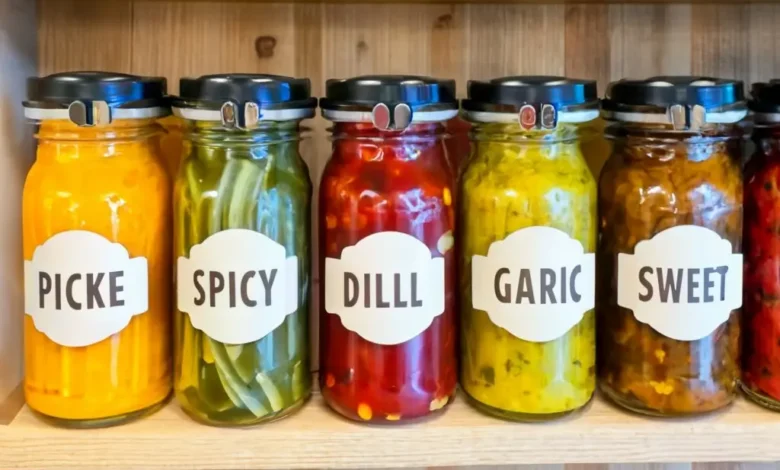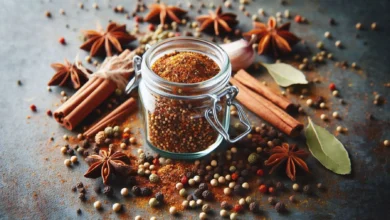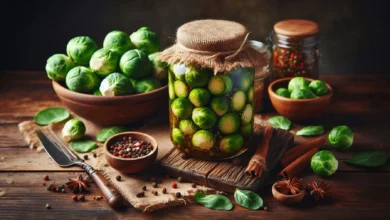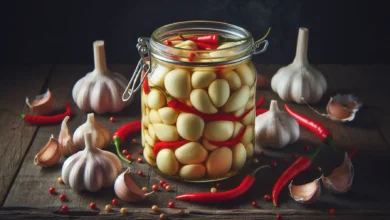How to Make Easy and Delicious Refrigerator Pickles
A simple and flavorful way to make refrigerator pickles with health benefits and easy-to-follow instructions.

Introduction
Refrigerator pickles are a quick and easy way to preserve cucumbers with delicious flavor. They don’t require canning equipment or long waiting periods. With just a few basic ingredients, you can create a crunchy, tangy treat that will last for weeks. The best part is that you can customize the flavor to suit your preferences by adjusting the seasoning or adding extra ingredients like garlic or dill.
These pickles are perfect for anyone looking for a simple recipe. They pair well with sandwiches, burgers, or as a tangy side dish. In this guide, we will walk you through the simple steps to make your very own refrigerator pickles at home.
Ingredients
| Icon + Item Name | Quantity | Notes |
|---|---|---|
| 🥒 Cucumber | 4-5 medium | Sliced or cut into spears |
| 🧄 Garlic cloves | 2-3 cloves | Peeled and smashed |
| 🌿 Fresh dill | 2-3 sprigs | Fresh dill sprigs for flavor |
| 🧂 Salt | 1 tablespoon | Preferably kosher salt |
| 🍚 Sugar | 1 tablespoon | Optional for sweetness |
| 🌶 Red pepper flakes | 1/2 teaspoon | Adjust based on your preferred spice level |
| 🧴 White vinegar | 1 cup | Can substitute with apple cider vinegar |
| 💧 Water | 1 cup | To dilute the vinegar |
Equipment Needed
| Icon + Item Name | Quantity | Notes |
|---|---|---|
| 🍶 Mason jars | 2-3 jars (quart size) | For storing the pickles in the fridge |
| 🧑🍳 Cutting board | 1 | For slicing the cucumbers |
| 🔪 Knife | 1 | To cut the cucumbers and garlic cloves |
| 🍲 Mixing bowl | 1 | To mix the brine ingredients |
| 🥄 Spoon | 1 | For stirring the brine |
| 🧴 Measuring cups | 1 set | To measure vinegar, water, and sugar |
| 🍽️ Small saucepan | 1 | For heating the brine ingredients |
Step-by-Step Instructions
- Prepare the Cucumbers: Wash the cucumbers thoroughly. Slice them into thin rounds or cut them into spears, depending on your preference.
- Make the Brine: In a mixing bowl, combine the vinegar, water, salt, and sugar. Stir the ingredients until the salt and sugar dissolve completely.
- Add the Flavors: Peel and smash the garlic cloves. Add the garlic, dill sprigs, and red pepper flakes to the brine. Stir to distribute the flavors evenly.
- Pack the Jars: Place the sliced cucumbers into your mason jars. Make sure to pack them tightly, but don’t overcrowd the jars.
- Pour the Brine: Pour the brine over the cucumbers in the jars. Ensure the cucumbers are fully submerged. If needed, add a bit more water to cover them completely.
- Seal the Jars: Close the mason jars tightly with lids. Make sure they’re sealed to prevent any air from getting in.
- Refrigerate: Place the jars in the refrigerator and let them sit for at least 24 hours before eating. The flavors will intensify as they chill.
- Serve and Enjoy: Once your pickles have had time to marinate, they’re ready to enjoy! Serve them as a side dish, on sandwiches, or as a tangy snack.
Storage and Serving Tips
- Storage: Keep your pickles in the refrigerator for up to 2-3 weeks. Make sure the cucumbers stay submerged in the brine to maintain their crispness. If necessary, top off the brine with extra water or vinegar.
- Serving Suggestions: Refrigerator pickles are incredibly versatile. Serve them as a side dish with your favorite meals, or add them to sandwiches and burgers for a tangy crunch. You can also chop them up and toss them into salads for an extra burst of flavor.
- Flavor Development: The longer the pickles sit in the fridge, the more flavorful they become. However, you can enjoy them after just 24 hours for a milder taste. For a stronger pickle flavor, let them marinate for 3-5 days.
- Customizing Flavors: Feel free to get creative with your pickles. Add extra spices, such as mustard seeds, coriander, or peppercorns, for a unique twist. You can also experiment with different types of vinegar for varying levels of acidity.
Nutritional Information
| Nutrient | Amount per Serving | % Daily Value |
|---|---|---|
| Calories | 10 kcal | 0% |
| Total Fat | 0 g | 0% |
| Saturated Fat | 0 g | 0% |
| Trans Fat | 0 g | 0% |
| Cholesterol | 0 mg | 0% |
| Sodium | 230 mg | 10% |
| Total Carbohydrates | 2 g | 1% |
| Dietary Fiber | 1 g | 4% |
| Sugars | 1 g | |
| Protein | 0 g | 0% |
| Vitamin A | 0% | |
| Vitamin C | 2% | |
| Calcium | 2% | |
| Iron | 1% |
Health Benefits of Refrigerator Pickles
Refrigerator pickles not only offer a delicious taste but also provide various health benefits, thanks to their ingredients and the fermentation process.
- Probiotics for Gut Health: The fermentation process involved in making refrigerator pickles helps cultivate beneficial bacteria (probiotics), which are essential for a healthy gut. Probiotics can improve digestion, boost immunity, and promote overall gut health.
- Rich in Antioxidants: Cucumbers, the main ingredient in refrigerator pickles, are packed with antioxidants like vitamin C and beta-carotene. These antioxidants help fight oxidative stress, protect cells from damage, and may contribute to better skin health.
- Low-Calorie Snack: At just 10 calories per serving, refrigerator pickles are a perfect low-calorie snack. They help curb cravings without the added calories, making them a great addition to any healthy eating plan.
- Hydration Support: With cucumbers being made up of 95% water, they are an excellent way to stay hydrated. Eating pickled cucumbers can help replenish fluids and keep you hydrated, especially during the hotter months.
- Blood Sugar Regulation: Vinegar, a key ingredient in pickles, may help regulate blood sugar levels. While research is ongoing, vinegar is believed to help manage blood sugar spikes, particularly after meals.
For more information on the benefits of fermented foods and their impact on health, check out this informative article on Healthline: “What Is Fermentation? The Lowdown on Fermented Foods“.
Conclusion
Refrigerator pickles are a simple, flavorful, and nutritious way to enjoy the benefits of fermented foods. They are easy to make, customizable with your favorite herbs and spices, and provide a host of health benefits, including improved digestion, hydration, and antioxidants. With their low calorie count and potential to regulate blood sugar, they make for a great addition to any healthy diet.
If you’re interested in exploring more pickling recipes and discovering unique ways to preserve your favorite foods, be sure to check out our main article on Pickling Recipes: 30 Best Unique and Flavorful Preserves. It’s packed with creative and delicious ideas to elevate your pickling game!





